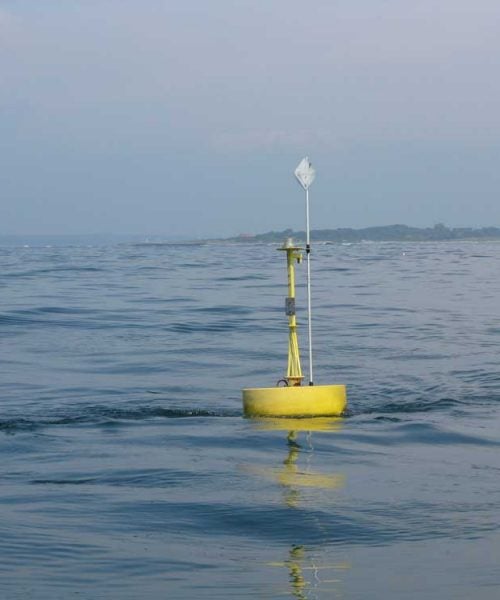Rhode Island Sound as a Potential Source of Harmful Algal Bloom Toxins for Narragansett Bay (2017-2018)
Principal Investigator: Lucie Maranda (URI GSO)
Collaborators: David Ullman (URI GSO), Marta Gomez-Chiari (URI FAVS), Conor McManus (RI DEM)
Funding Source: Rhode Island Sea Grant
In the fall of 2016 and spring of 2017, Narragansett Bay (NB) and Rhode Island Sound (RIS) experienced a significant diatom bloom of Pseudo-nitzschia spp. Public health concerns have increased because of the known production of the neurotoxin domoic acid (DA) by many Pseudo-nitzschia species. The toxin can move through the food chain from plankton feeders to their predators. Further, humans eating DA-laden seafood experience gastrointestinal distress and, in acute and some chronic cases, seizures and memory loss, giving the syndrome the name of Amnesic Shellfish Poisoning, or ASP. As such, these blooms and DA presence has led RI DEM to periodically close local shellfish harvesting as a precautionary measure during the blooms, resulting in economic losses to the fisheries and aquaculture industries.
The main objective of this project is to determine the potential for intrusions of RIS water to carry harmful algae into NB. Through this work, we will (1) set a sentinel station in RIS to measure water properties and toxins in shellfish in waters prone to intrusions into NB, (2) establish the occurrence, abundance, and distribution of Pseudo-nitzschia spp. in relation to physical parameters within RIS and Lower NB, and (3) relate domoic acid uptake in blue mussels (Mytilus edulis) with Pseudo-nitzschia abundance and environmental variables to further our understanding of the bloom dynamics for improved management of shellfish resources.
 Home
Home Browse
Browse Close
Close Events
Events Maps
Maps Email
Email Brightspace
Brightspace eCampus
eCampus



